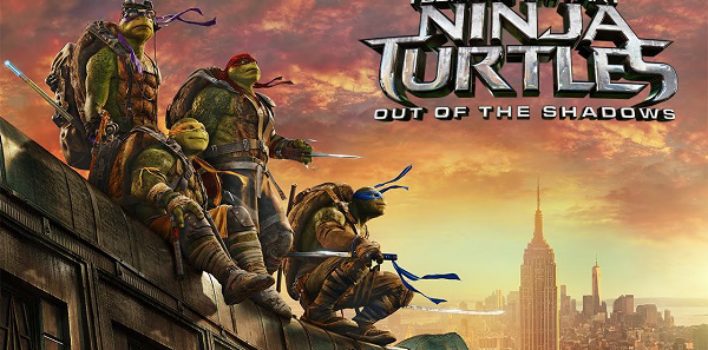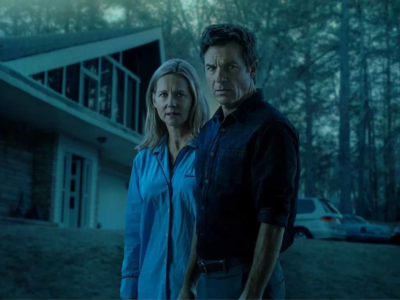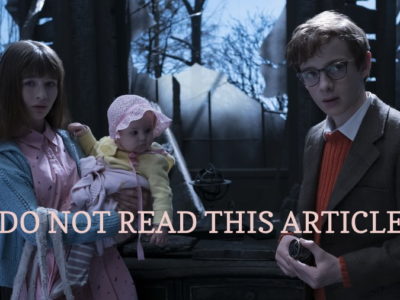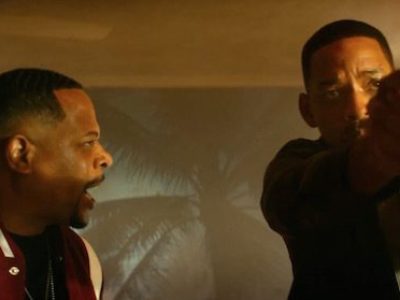Review| Teenage Mutant Ninja Turtles: Out of the Shadows
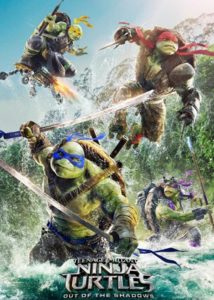 Despite a change in directors to Dave Green (Earth to Echo), Michael Bay’s fingerprints are still all over this sequel to the 2014 reboot of Teenage Mutant Ninja Turtles. His influence is evident in everything from an enormous spacecraft piecing itself together as if ripped from a Transformers installment, to the obligatory “Megan Fox is hot” sequences in case you were worried her character might experience some development. This time around instead of magnetic knives hurling out of and back to a robotic looking costume, we are given an actual robot with a talking brain protruding from its torso. Super-villain Krang, a common adversary in the animated series, takes front stage as the main protagonist while teaming up with Shredder for complete world domination. For some reason.
Despite a change in directors to Dave Green (Earth to Echo), Michael Bay’s fingerprints are still all over this sequel to the 2014 reboot of Teenage Mutant Ninja Turtles. His influence is evident in everything from an enormous spacecraft piecing itself together as if ripped from a Transformers installment, to the obligatory “Megan Fox is hot” sequences in case you were worried her character might experience some development. This time around instead of magnetic knives hurling out of and back to a robotic looking costume, we are given an actual robot with a talking brain protruding from its torso. Super-villain Krang, a common adversary in the animated series, takes front stage as the main protagonist while teaming up with Shredder for complete world domination. For some reason.
Everyone’s favorite mutated reptiles are just a bit older and just a bit more confident in their skills this time around. They have developed some new tech (Turtle Van) and solidified a relationship with April O’Neil (Megan Fox) to help maintain their secrecy and keep them in the shadows while fighting crime all over the city. But as the aptly titled sequel implies, they are forced to come out of the shadows and reveal themselves for what they truly are. This is a theme inherent in the story of the turtles; fitting in. Many of our crime-fighting heroes we see on the big screen today would have no trouble blending in to the crowd if they so desired. Such is not the case with our shell-wearing crew. Toward the beginning of the film we see Michelangelo dealing with this especially. Despite having brothers of the same likeness there is a real sense of detachment from “normalcy”. They can’t take credit for the crimes they stop, even when it’s an entire city they save. Mikey embodies this feeling as he watches people go about their daily routine, and even tries blending in during a Halloween parade. What’s interesting is the degree to which this desire to be a normal person shows up in each of our characters. It is strongest in Raph and Mikey, which makes sense because they are closest and most similar to each other in their interests and personalities. Donatello comes off as somewhat detached from the conversation aside from revealing an opportunity to actually become human (more on that later). Leonardo is entirely opposed to the idea of it. “We’re Turtles”, he says defiantly. “True acceptance only comes from within”. How many times do we hear that in our culture today? But is it true? Is it the case that personal comfort with ourselves is the goal?
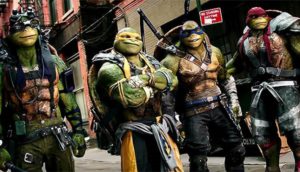 To even question the notion of personal acceptance probably strike some as insensitive. To be clear, I’m not saying we shouldn’t be comfortable with who we are. I’m challenging the assertion that true acceptance only comes from within. I think because of my studies through Clear Lens lately, the teachings of Buddhism are fresh on my mind, and this ideology strikes me as one of Buddhist origins. It’s on display in TMNT as well, even if only subtly through their master Splinter. In one scene he’s only seconds from full enlightenment before the turtles crash his meditation session. All the phrasing is there; finding truth from within, achieving enlightenment or greater wisdom solely through self-reflection and meditation. There is no room in this worldview for an objective standard set by our creator by which we discern our acceptance by Him with eternity in mind. Some of our shelled heroes were looking for acceptance from other people. Some of them were looking only to accept themselves. That’s all well and good for a “kids” movie/show that stays on the shallow end of these topics, but as Christians we need to recognize that our efforts shouldn’t stop there. It’s one thing to develop a comfort with yourself; who you are, what you like, etc., but the end goal is to be pleasing to God, who loves you and gave his life for you to secure you with Him in eternity.
To even question the notion of personal acceptance probably strike some as insensitive. To be clear, I’m not saying we shouldn’t be comfortable with who we are. I’m challenging the assertion that true acceptance only comes from within. I think because of my studies through Clear Lens lately, the teachings of Buddhism are fresh on my mind, and this ideology strikes me as one of Buddhist origins. It’s on display in TMNT as well, even if only subtly through their master Splinter. In one scene he’s only seconds from full enlightenment before the turtles crash his meditation session. All the phrasing is there; finding truth from within, achieving enlightenment or greater wisdom solely through self-reflection and meditation. There is no room in this worldview for an objective standard set by our creator by which we discern our acceptance by Him with eternity in mind. Some of our shelled heroes were looking for acceptance from other people. Some of them were looking only to accept themselves. That’s all well and good for a “kids” movie/show that stays on the shallow end of these topics, but as Christians we need to recognize that our efforts shouldn’t stop there. It’s one thing to develop a comfort with yourself; who you are, what you like, etc., but the end goal is to be pleasing to God, who loves you and gave his life for you to secure you with Him in eternity.
Moving on to some lighter subject matter now, as the movie progresses the turtles discover that Shredder and his Foot Clan are using a quasi-ooze substance to create powerful warriors. This is not the green ooze we’re used to. This is purple, and actually unleashes an inner “spirit animal” of sorts encoded deep in a person’s genes. This is also another somewhat Buddhist trait to the film as it relates to reincarnation. Never the less, this allows for Bebop and Rock Steady to emerge as the powerful mutated creatures Shredder intends to stop the turtles from stopping him. Unfortunately the only time this opportunity arose was in search for an alternative dimension traveling device that landed in Brazil. Don’t ask, it’s a Krang storyline thing. A lot of this took place on a plane or in water, so the action is somewhat muddled. The fighting here left a lot to be desired as the chosen environments really restricted opportunities to highlight the ninja abilities of the turtles.
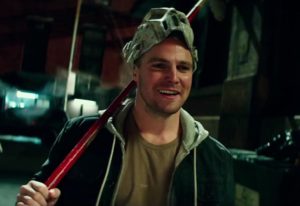 Also new to the screen is the short-tempered anti-hero, Casey Jones. Except he isn’t really short-tempered as fans of the original movie(s) and the animated series might recall him. And he’s not an anti-hero either. More of a regular good guy, hero wannabe. Stephen Amell won this role, and I’m not exactly sure how aside from marketing recognition. For starters, it’s hard to see Amell on screen at this point in his career and not see Oliver Queen (Arrow). Secondly, this isn’t the Casey Jones we’re used to. He isn’t a vigilante, he’s a cop. He isn’t particularly aggressive or temperamental, he’s calm and somewhat reasonable. He does have some funny moments with the turtles that I enjoyed, but in almost every way this rendition of Jones is opposite of what we’ve come to expect from the character’s history. My issue is that those changes don’t feel warranted or necessary, and Amell doesn’t fit the part for me.
Also new to the screen is the short-tempered anti-hero, Casey Jones. Except he isn’t really short-tempered as fans of the original movie(s) and the animated series might recall him. And he’s not an anti-hero either. More of a regular good guy, hero wannabe. Stephen Amell won this role, and I’m not exactly sure how aside from marketing recognition. For starters, it’s hard to see Amell on screen at this point in his career and not see Oliver Queen (Arrow). Secondly, this isn’t the Casey Jones we’re used to. He isn’t a vigilante, he’s a cop. He isn’t particularly aggressive or temperamental, he’s calm and somewhat reasonable. He does have some funny moments with the turtles that I enjoyed, but in almost every way this rendition of Jones is opposite of what we’ve come to expect from the character’s history. My issue is that those changes don’t feel warranted or necessary, and Amell doesn’t fit the part for me.
The primary payoff in this film is when the turtles are forced to come ‘out of the shadows’ and reveal themselves to the human beings, in particular the police force. This is the moment of highest drama and the point in which prior decisions and conflicts of becoming human or wanting to fit in start to pay off and give our heroes the confidence they need to face their enemy. Overall this is about what you would expect from a TMNT film with the 2014 release as a backdrop of expectations. Some surface level commentary about being different and feeling isolated with some cool mutated ninjas working on a mastermind criminal plot to destroy the world. The central villain, Krang, literally comes out of nowhere with almost no explanation of why, and a weak explanation as to how. His involvement and motivation is terribly underdeveloped, and in a movie that is already adding a mutated rhinoceros and a mutated warthog, a brain attached to tentacles inside a robot is asking a lot of the audience. In a very out of character move Shredder trusts him completely and essentially does his dirty work for the majority of the film. Aside from those two things I didn’t find much else with the story that I had issue with like I did in the 2014 film. This was a fairly fun movie to catch in the theater, provided you aren’t setting your expectations too high.


